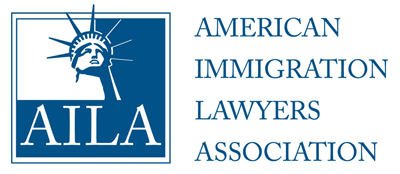The J1 Exceptional Hardship Waiver – Form I-612: Brief Summary

The I-612 Exceptional Hardship Waiver is a process that could remove/waive the 2-year home residency requirement (aka subjection to Special Skills Lists 212(e)). However, in order to receive approval for this waiver, the “hardship” MUST be exceptional , it must be more than ordinary.
Please Note: If the Foreign Country permits a No Objection Waiver, it is recommended to attempt to receive that waiver as it is generally cheaper, quicker, and less stressful than the USCIS I-612 Exceptional Hardship Waiver.
Now, what are the common kinds of things USCIS can look toward in an Exceptional Hardship Waiver:
- Medical hardship (e.g. a surgery is time-sensitive and needs to be done soon, and the home country does not allow the surgery or cannot meet the medical needs. This is usually supported by a US-Based Doctor)
- Psychological hardship (This is usually supported by a US-Based Psychologist)
- Financial hardship, in the form of debts, bills, and other financial obligations (must be a large amount in order to qualify)
- Political hardship (e.g. Anti-US Sentiments may place the life or welfare of a US Citizen or the J1 in danger)
- Religious hardship (e.g. Religious Discrimination may result due to marrying someone who is not in the same religion or converting to an unpopular religion in the home country, ect.)
Who needs the Hardship (based on a marriage filing)?
- The US Citizen Spouse
- US Citizen Step-Children
- Possibly Aged/Elderly US Citizen Inlaws (if they live with you)
- Disabled Family Members who are US Citizens
- Lawful Permanent Resident Spouse, Parent, or child
The individuals who CAN NOT be the subject to the Hardship are the J1 or J1 Visa Holder. The J1/J2 cannot be the focus, but that doesn’t mean the J1/J2 situation cannot be added to the bigger picture.
For instance, a J1 Spouse that is sick or needs medical attention has a direct effect on the US Citizen Spouse. The US Citizen Spouse may have to pay for the medical treatments without the assistance of health insurance (Financial), the medical condition may be causing emotional or psychological harm to the US Citizen Spouse, and the US Citizen may have legitimate fears of the J1 Spouse being treated Abroad versus within the US.
Parts of the Waiver Explained:
The Waiver Filing actually occurs in 2 parts / 2 halves:
First Half: I-612 filing with USCIS, which focuses on the Hardship Establishment
Second Half: DS-3035 filing with DOS, which focuses on processing the Waiver
If the I-612 is not approved, the DS-3035 would not be able to be processed under the Hardship Waiver basis. If the I-612 is approved, there is an extreme likelihood the DS-3035 would be approved. In a nutshell, it is easier to picture the I-612 as the most important part of the Waiver Filing, since it is the part that supports the approval, the part that shows the government why the government should care about your case.
Process: Step by Step
The process can be a little confusing, but it can be visualized as follows:
- Complete Form Stage: Complete the DS-3035 Form Online, summarizing the I-612 hardship
- Complete Form Stage: With the Completed DS-3035 Barcode Page for USCIS, Complete the I-612 Form
- Prep Supporting Documents Stage: Prepare the I-612 Hardship Brief with supporting documents, it MUST have supporting documents
- Prep Supporting Documents Stage: Prepare the Signed Letters from the Qualifying US Citizens or Lawful Permanent Residents to accompany the I-612
- Mailing Stage: Mail off the DS-3035 Filing to the DOS
- Mailing Stage: Mail off the I-612 Filing to USCIS
- Government Processing Stage: Receive the I-612 Receipt Notice from USCIS
- Government Processing Stage: The DOS will eventually make the DS-3035 Filing Status available online (but nothing would happen until the i-612 is processed)
- Government Processing Stage:
The I-612 will either get:
- an RFE (if something could not be found in the file or was not sent or better hardship must be given) or
- a NOID (if no hardship has been provided) or
- a Denial, usually after responding unsatisfactorily to a USCIS RFE or NOID (if no hardship has been provided)
- be placed on HOLD (which means an I-613 has been created and the I-612 filing is being sent to DOS for review with the ds-3035) PAUSE!!! At this point, the waiver filing is very likely to be approved, but filers MUST wait for future notices.
- Notice Stage: Filer may receive a copy of the I-613 in the mail just showing that the Hardship has been substantiated and the hardship has reached the level of Exceptional.
- Notice Stage: DOS Favorable Recommendation Notice can be emailed and normally arrives in the mail in a few Business Days. This Notice can permit an Adjustment of Status (Green Card) Filing. This notice will explain the waiver filing is being transferred to USCIS for final processing in the US Immigration System.
- Notice Stage: USCIS I-612 Approval Notice arrives by mail and means the Restriction of the J1 Visa has been fully removed, which permits Immigration to the US, and acquiring other US Visas, such as H-1B and another J1 Visa.
If you need assistance filing an Exceptional Hardship Waiver Filing, please schedule a consultation with our office, Fickey Martinez Law Firm, P.L.L.C.
Related Posts:
Disclaimer: This Blog is made available by the lawyer or law firm publisher for educational purposes only as well as to give you general information and a general understanding of the law, not to provide specific legal advice. By using this blog site you understand that there is no attorney-client relationship between you and the Blog/Web Site publisher. The Blog should not be used as a substitute for competent legal advice from a licensed professional attorney in your state.
The post The J1 Exceptional Hardship Waiver – Form I-612: Brief Summary appeared first on Fickey Martinez Law Firm.












